Today Current Affairs: 31st August 2021 for UPSC IAS exams, State PSC exams, SSC CGL, State SSC, RRB, Railways, Banking Exam & IBPS, etc
Table of Contents
Confederation Of Indian Industry (CII): Survey:

A recent poll survey result conducted by Confederation of Indian Industry (CII) involving the CEO of companies
Observations made through this survey:
- Growth expected by the government and RBI: The central bank has recently downgraded its GDP growth projection for the year to 9.5% from 10.5% earlier, while the Chief Economic Advisor Krishnamurthy Subramanian expects growth to be at 11% as estimated in the Economic Survey.
- Nearly two-thirds of CEOs of large corporates polled by CII at its national council meeting earlier this month expect India’s GDP growth in 2021-22 to be 9% or less.
- Just 12% of CEOs expect growth to be over 10%, while 20% expect GDP to grow at 8% or less than 8%. As many as 44% of CEOs expect growth to be between 8% and 9%, while 23% expect it to hit the 9%-10% range
- The poll survey shows that CEOs of industries believe that inflation in the present economy is not a transient problem has made out by the government. Just 33% CEOs expect average retail inflation during the year to cool off from the present level (5.6% in July), while 67% expect it to be uncomfortably close to or beyond the RBI’s monetary policy tolerance threshold of 6%.
- The poll survey also indicated that significant amount of CEOs felt that the cost of doing business presently is high in the country. 32% also blamed the high cost of doing business in the country
- Other reasons for low investment as the survey include– lack of animal spirits, ease of doing business remains cumbersome at the ground level, 33% of the CEOs said fresh investments were not in the offing as current capacities exceed demand
About CII:
- The Confederation of Indian Industry (CII) works to create and sustain an environment conducive to the development of India, partnering industry, Government, and civil society, through advisory and consultative processes.
- CII is a non-government, not-for-profit, industry-led and industry-managed organization, with over 9000 members from the private as well as public sectors, including SMEs and MNCs, and an indirect membership of over 300,000 enterprises from 294 national and regional sectoral industry bodies.
Oil Palm Cultivation: Concern:

Environmental activists and politicians have expressed concerns over the centre’s proposal to promote oil palm cultivation in the Northeastern states and in the Andaman and Nicobar islands
- The concerns are primarily expressed on the ground that promotion of oil palm cultivation will further result in environmental degradation (oil palm is an invasive species) of the pristine ecosystem already threatened by various other threats
- Other concerns expressed include– impact on community ownership of tribal lands, oil palm cultivation is a water-intensive task, monoculture cropping with a long gestation period will be unsuitable for small farmers, endangering wildlife etc
- However, the government has allayed some of these concerns through its justification that the land identified for the cultivation in the north-eastern states have already been cleared and are cultivating in some cases, oilseeds; shifting to oil palm is more productive than cultivating oilseeds for the farmers
National Mission on Edible Oil-Oil Palm:
- Prime Minister Narendra Modi has announced this new national initiative on palm oil production to help increase farm incomes. The scheme involves investment of over Rs 11,000 crore.
- Aims and Objectives of the scheme:
- Achieve self-reliance in edible oil.
- Harness domestic edible oil prices that are dictated by expensive palm oil imports.
- To raise the domestic production of palm oil by three times to 11 lakh MT by 2025-26.
- The special emphasis of the scheme will be in India’s north-eastern states and the Andaman and Nicobar Islands due to the conducive weather conditions in the regions.
- Under the scheme, oil palm farmers will be provided financial assistance and will get remuneration under a price and viability formula.
- It is expected to incentivize production of palm oil to reduce dependence on imports and help farmers cash in on the huge market.
About Palm oil:
- Palm oil is currently the world’s most consumed vegetable oil.
- It is used extensively in the production of detergents, plastics, cosmetics, and biofuels.
- Top consumers of the commodity are India, China, and the European Union (EU).
What Is Quad grouping?
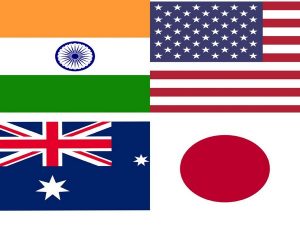
Defence Minister Rajnath Singh said on Sunday while stating that unexpected Paradigm shifts affects countries globally that the Quadrilateral grouping has been constituted keeping these things in mind.
- The quadrilateral security dialogue includes Japan, India, United States and Australia.
- In March 2020, the Quad members held a meeting with representatives from New Zealand, South Korea and Vietnam to discuss their respective approaches to the COVID-19 pandemic. Instigated by the US, this new grouping of key Indo-Pacific states was called “Quad Plus”.
Recent developments:
- Today the enemy no longer needs to enter the border. He can also target our security apparatus from outside the border.
- Alignment and re-alignment of global powers have added to the already changing security challenges.
- The changing equations in Afghanistan are a recent and important example of this. These circumstances have forced every country to think on its strategy today.
- The stand-off along the Line of Actual Control (LAC) with China in Eastern Ladakh
- A positive agenda built around collective action in humanitarian assistance and disaster relief, monitoring shipping for search and rescue or anti-piracy operations, infrastructure assistance to climatically vulnerable states, connectivity initiatives and similar activities.
What is Quad grouping?
- The quadrilateral security dialogue includes Japan, India, United States and Australia.All four nations find a common ground of being the democratic nations and common interests of unhindered maritime trade and security.
- The grouping traces its genesis to 2004 when the four countries came together to coordinate relief operations in the aftermath of the tsunami.
- It then met for the first time in 2007 on the sidelines of the Association of South East Asian Nations (ASEAN) summit.
- The intention was to enhance maritime cooperation between the four nations.
The Election Commission Of India (ECI) Organized A Two-Say SVEEP:

The Election Commission of India (ECI) organized a two-day SVEEP (Systematic Voters’ Education and Electoral Participation) Consultation Workshop.
- SVEEP Started in 2009, as the flagship program of the ECI for voter education.
- Primary goal is to build an inclusive & participative democracy by encouraging all eligible citizens to vote and make an informed decision & ethical choice.
About Election Commission of India:
- An autonomous constitutional authority responsible for administering Union and State election processes in India.
- Administers elections to the Lok Sabha, Rajya Sabha, and State Legislative Assemblies and the offices of the President and Vice President.
- Part XV of the Indian constitution deals with elections, and establishes a commission for these matters.
- Article 324 to 329 of the constitution deals with powers, function, tenure, eligibility, etc of the commission and the members.
- Originally, it had only one election commissioner but after the Election Commissioner Amendment Act 1989, it has been made a multi-member body.
- Presently, it consists of one Chief Election Commissioner (CEC) and two Election Commissioners (ECs) – appointed by the President.
- They hold office for a term of 6 years or until they attain the age of 65 years, whichever is earlier.
Hurricane Ida:
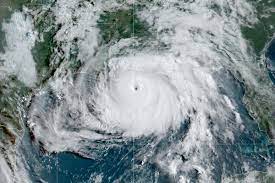
Hurricane Ida made landfall in Louisiana, US. It is an extremely dangerous Category 4 storm and one of the most powerful storms ever to hit the US.
- It will test the hundreds of miles of new levees that were built after the devastation of Hurricane Katrina (2005), which made landfall 16 years ago in the US.
- Hurricanes are the biggest and most violent storms on the planet.
- Tropical cyclones or hurricanes use warm, moist air as fuel, and therefore form over warm Equatorial water.
- Mechanism: When the warm, moist air rises upward from the surface of the ocean, it creates an area of low air pressure below.
- When this happens, the air from the surrounding areas rushes to fill this place, eventually rising when it becomes warm and moist too.
- An eye forms in the centre.
- It is the calmest part of the cyclone. Before the wind reaches the centre it gets warmed up and rises upwards.
- When the warm air rises and cools off, the moisture forms clouds. This system of clouds and winds continues to grow and spin.
- This disturbance is fuelled by the ocean’s heat and the water that evaporates from its surface.
- Such storm systems rotate faster and faster.
- Storms that form towards the north of the equator rotate counterclockwise, while those that form to the south spin clockwise because of the rotation of the Earth.
Hydropower Projects In Himalayas:
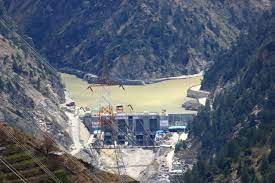
The central government has said that no new Hydropower projects would be allowed in the upper reaches of the Ganga and those sanctioned would have to abide by environment regulations that prescribe a minimum flow in the river at all times of the year to preserve its health.
- Seven projects, all in Uttarakhand, have been allowed to complete construction primarily on the ground that they were over 50% complete.
- The seven projects are the:
- Tehri Stage 2: 1000 MW on Bhagirathi river
- Tapovan Vishnugadh: 520 MW on Dhauliganga river
- Vishnugadh Pipalkoti: 444 MW on Alaknanda river
- Singoli Bhatwari: 99 MW on Mandakini river
- Phata Bhuyang: 76 MW on Mandakini river
- Madhyamaheshwar: 15 MW on Madhyamaheshwar Ganga
- Kaliganga 2: 6 MW on Kaliganga river
- IActivists have raised concerns that two projects, Singoli Bhatwari and Phata Bhuyang, which were specifically linked to the Kedarnath Tragedy (2013) have been allowed.
- The Vishnugadh project damaged in the February 2021 Floods too has been allowed to progress even though 200 plus people died due to the criminal negligence of there not being a Disaster Warning System.
- Hydropower projects, dams and construction activities are affecting the fragile Himalayan region making them susceptible to disasters.
15th Finance Commission: water and sanitation:
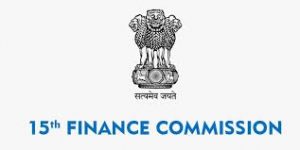
Rs. 1,42,084 Crore tied grant to rural local bodies (RLBs)/ panchayats for water and sanitation for the five years 2021–22 to 2025–26, which has been recommended by the 15th Finance Commission, will have a huge impact on ensuring these services in villages and thus on public health and quality of life in rural areas.
- In all, the 15th Finance Commission recommended Rs. 2,36,805 Crore to RLBs/ PRIs for the period 2021-22 to 2025-26.
- Commission also identified ‘water supply and sanitation’ as national priority areas, which determines the quality of life of people living in rural areas.
- It has recommended 60% of the allocation to RLBs/ Panchayats i.e. Rs. 1,42, 084 Crore as a tied grant to be utilized for a.) supply of drinking water, rainwater harvesting and water recycling; and b.) sanitation & maintenance of open-defecation free (ODF) status.
- The Dept. of Drinking Water & Sanitation (DDWS), Ministry of Jal Shakti, Govt of India will act as the nodal Department for determining the eligibility of the rural local bodies for the ‘15th FC tied grant for water & sanitation’ and recommend release of tied grant for water & sanitation, to the Dept. of Expenditure, Ministry of Finance for all States.
Fit India Mobile App On National Sports Day:
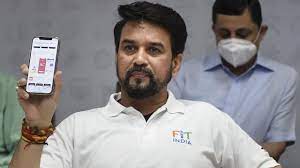
Sports Minister Shri Anurag Singh Thakur launched the Fit India Mobile App on National Sports Day.
- The Fit India App is free and available in English & Hindi on both the Android and the iOS platforms.
- The Fit India Movement was launched on 29th August 2019 by Prime Minister Narendra Modi with the vision of making India a Fit and Healthy Nation.
- Over the past two years, the Fit India Movement has reached millions of people across the country through its various fitness campaigns such as Fit India School Week, Fit India Freedom Run, Fit India Cyclothon and many others.
- Currently, the Fit India Movement is also conducting Fit India Freedom Run 2.0 in celebration of Azadi Ka Amrit Mahotsav to celebrate and commemorate 75 years of India’s Independence.
National Sports day:
- It is observed on 29 August every year to commemorate the birthday of Indian hockey legend Major Dhyan Chand.
- Born on 29 August 1905 in present-day Prayagraj, UP, Major Dhyan Chand was the captain of the Gold medal-winning Indian hockey team at the Berlin Olympics in 1936
Presidency Of The UN Security Council:
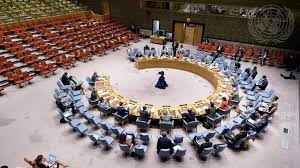
India has assumed Presidency of the UN security council. The presidency of the Council is held by each of the members in turn for one month, following the English alphabetical order of the Member States’ names.
- Prime Minister Modi virtually presided over the Council meeting. He is the first Indian Prime Minister to do so.
- Last year when the UN celebrated the 75th year of its foundation, India was elected to the Council along with Ireland, Kenya, Mexico and Norway. India began its eighth term on January 1, 2021.
- Since all other countries come after India sequentially, it gives India another chance to assume the presidency in December next year.
- India is a founding member of the UN. That India signed the Charter of the United Nations along with 50 other countries in 1945 even before gaining independence is a measure of its credentials—millennial civilisations, multi-faceted diversities and peaceful vocation.
- Vijaya Laxmi Pandit was elected president of the eight-session of the UN General Assembly in 1953, the first woman to head the organisation.
- Since the onset of its peacekeeping mission in 1948, India has sent contingents on 49 occasions, contributed close to 200,000 troops, and in 2007 had the unique distinction of deploying the first all-women peacekeeping force to Liberia.
Who Are Dimasas?:
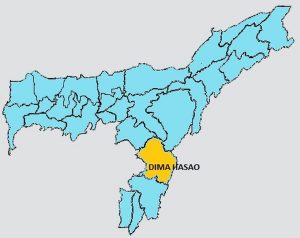
A suspected militant attack left five truckers dead in Assam’s Dima Hasao hill district. Intelligence inputs suggest that an outfit called the Dimasa National Liberation Army (DNLA) was behind the attack.
- The Dimasas (or Dimasa-Kacharis) are the earliest known rulers and settlers of Assam, and now live in Dima Hasao, Karbi Anglong, Cachar, Hojai and Nagaon districts of central and southern Assam, as well as parts of Nagaland.
- Prior to Ahom rule, the Dimasa kings — believed to be the descendants of the rulers of the ancient Kamarupa kingdom — ruled large parts of Assam along the south bank of the Brahmaputra between the 13th and 16th centuries.
- Their earliest historically known capital was Dimapur (now in Nagaland), and later Maibang in North Cachar Hills.
- The hill districts of Assam — Karbi Anglong and Dima Hasao (earlier North Cachar Hills) — have had a long history of insurgency by Karbi and Dimasa groups which peaked in the mid-1990s, and was rooted in a core demand of statehood.
- Both districts are now protected under the Sixth Schedule of the Constitution, and allows for greater political autonomy and decentralised governance in certain tribal areas of the Northeast.
- They are run by the North Cachar Hills Autonomous Council and the Karbi Anglong Autonomous Council respectively.
National Monetisation Pipeline (NMP):

To make the National Monetisation Pipeline (NMP) a success, the government should give Income Tax breaks to attract retail investors into instruments such as Infrastructure Investment Trusts (InvITs), the NITI Aayog has recommended.
- The Centre’s think tank driving the NMP, estimated to raise almost ₹6 lakh crore for the exchequer over four years, has also called for bringing such trusts within the ambit of the Insolvency and Bankruptcy Code (IBC) to provide greater comfort to investors.
- Bringing in policy and regulatory changes to scale up monetisation instruments such as InvITs and Real Estate Investment Trusts (REITs) and expand their investor base have been identified as a critical element for the NMP.
- The government plans to use the InvIT and REIT route to monetise public assets such as highways, gas pipelines, railway tracks and power transmission lines.
- Section 54EC of the Income Tax Act, 1961:
- More tax-efficient and user-friendly mechanisms like allowing tax benefits in InvITs as eligible security to invest under Section 54EC of the Income Tax Act, 1961, are important starting points for initiating retail participation in the instruments
- Section 54EC allows taxpayers to offset long-term capital gains from transactions in immoveable properties through investments in bonds issued by some government-backed infrastructure firms.




